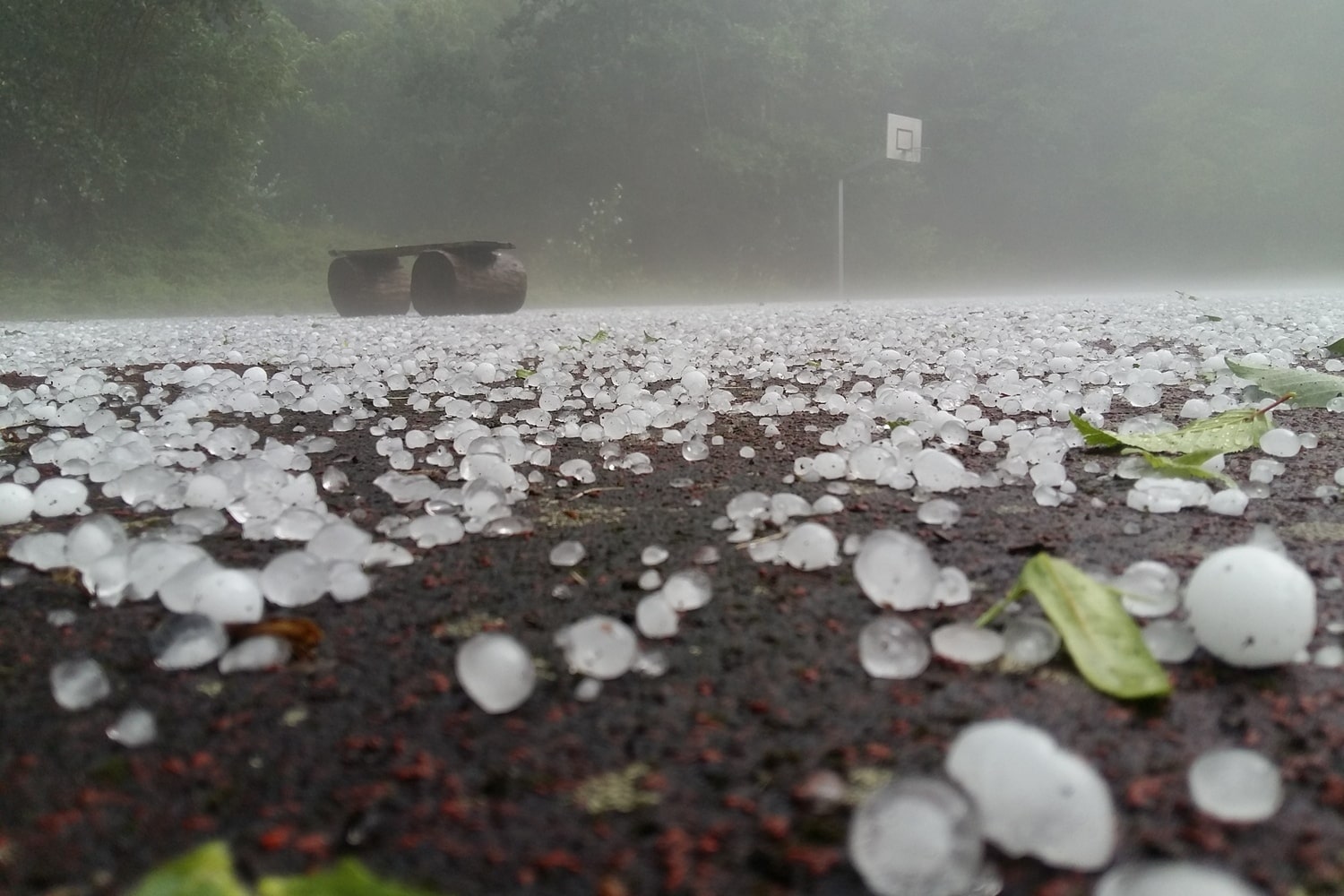Hail is one of the most surprising and destructive weather phenomena that can occur suddenly and cause significant damage. While it may appear to be simply frozen rain, its formation involves complex atmospheric processes. It usually develops during thunderstorms and is often accompanied by strong winds and lightning. Below is a selection of interesting facts about hail that you might not have known.
- Hail forms in thunderclouds when powerful updrafts lift raindrops high into the atmosphere, where temperatures are well below freezing. The droplets freeze and fall slightly before being lifted again, collecting additional layers of ice. This process can repeat multiple times until the hailstone becomes too heavy and falls to the ground.
- Hail most often occurs during the summer months, even though it’s associated with cold weather. This happens because summer thunderstorms are more intense and have stronger updrafts. In contrast, winter conditions rarely produce the powerful air currents needed to form hail.
- The largest hailstone ever recorded was over 20 centimeters in diameter and weighed nearly a kilogram. It fell in South Dakota, USA, in 2010. Such hail is powerful enough to puncture roofs, destroy vehicles and seriously injure people.
- Hailstones can strike the ground at speeds exceeding 150 kilometers per hour. That kind of force is enough to shatter windows, damage rooftops and break tree branches. The sound of hail hitting surfaces is often deafening.
- Although hail typically affects a small area, it can destroy entire crops in just a few minutes. This makes agriculture particularly vulnerable, with farmers suffering major losses. That’s why many countries implement protective systems or offer hail insurance.
- There have been historical cases where hailstorms have led to fatalities. In 1888, more than 240 people were killed in India due to a particularly violent hailstorm. The hailstones were so large and heavy that people had no time to find shelter.
- Hailstones are not always perfectly round. They often appear as irregular chunks of ice or layered spheres resembling onions. When cut open, a hailstone can reveal concentric rings, showing how it grew layer by layer.
- Modern weather radar systems can detect the conditions that lead to hail formation. This allows meteorologists to issue warnings in advance and reduce potential risks. However, forecasts are not always precise due to the unpredictability of thunderstorms.
- In some areas, farmers use special anti-hail cannons. These devices shoot sound waves or pressure bursts into the sky in an attempt to disrupt hailstone formation. The effectiveness of these methods is still debated among experts.
- Hail is distinct from other types of precipitation like freezing rain or snow. It forms only in thunderclouds and always falls as solid ice. Its appearance nearly always signals turbulent and unstable weather conditions.
- Hail is most common in temperate regions such as North America, India, China and Europe. It occurs less frequently in tropical zones and is almost nonexistent in Arctic climates. Its distribution is closely tied to local atmospheric patterns.
- Many countries offer insurance programs that cover hail-related damages. These are especially popular among farmers, vehicle owners and property managers. Such protection is essential due to the unpredictable nature of hailstorms.
- Occasionally, hail can fall while the sun is shining, making the event seem even more surreal. Seeing ice falling from the sky under clear skies can be disorienting and surprising. Though rare, it is a documented meteorological phenomenon.
- Hailstones are not always clear or white. Depending on the atmosphere, they can take on shades of gray, brown or even red due to trapped dust and pollutants. Each stone carries traces of the environment in which it formed.
- Scientists believe that hail-like phenomena may also occur on other planets. Storms on Jupiter or Saturn, for instance, might produce ice crystals in their massive atmospheres. This possibility is being explored in planetary science research.
- Some cultures have traditional ways of protecting against hail. These include ringing bells, saying prayers or marking fields with symbols. Though lacking scientific proof, such practices are deeply rooted in folk beliefs.
These fascinating and eye-opening facts about hail reveal how complex and unpredictable this natural phenomenon can be. Understanding its nature helps us better prepare for sudden weather changes and minimize potential damage. Education and modern technology play a crucial role in protecting lives and property. Hail continues to impress with its power, variety and impact on everyday life.





